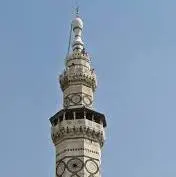hum stuff
1/36
There's no tags or description
Looks like no tags are added yet.
Name | Mastery | Learn | Test | Matching | Spaced |
|---|
No study sessions yet.
37 Terms
Hadrians Wall
protect civilizations from barbarians and outside invasions
Olmec Heads
one of first civilizations: Olmec -> meso america -> developed independently without trade.
Technology → carving
They had specialization of labor
They had some state authority (religious or political) that could coordinate the creation of this art making
Pillars of Ashoka
Spread Buddhism + assisted in the consolidation of imperial authority through religious unity throughout south asia
What is NOT a pillar of islam
Worshipping Muhammad
Calligraphy
In Islamic art→ there was a ban on depicting living things in religious art so they turned to ______ to express faith, devotion, + spirituality for gods that they worshipped
Judaism, Christianity, and Islam
All monotheistic
abrahamic religions
all recognize jerusalem
They do NOT use identical religious texts
The Venus of Willendorf
Sign of fertility icon used by Paleolithic people
Filial Piety
respect and care for your elders

Minaret
Minaret
a tall slender tower, typically part of a mosque, with a balcony from which a muezzin calls Muslims to prayer.
Physical symbol/beacon of Islamic strength and influence
Daoism
Founded by Laozi
No association w/ the Great Wall of China
talks about respecting elders
Justinian
emperor of Byzantine empire
Justinian’s Code
gave women many more legal rights than their counterparts in other classical or post-classical civilizations
ziggurats and pyramids
both science of a belief in religious gods and the afterlife
geographical features necessary for an early civilization to develop
Proximity to river, fertile soil, favorable climate
Romans and Han Chinese
built a trade connection due to the silk road
centralized govt
strong militaries
creating institutions and practices that will endure over time
they set the stage
considered to be classical empires
Downfall: nomadic invasions, military, revolts, outbreak of disease/epidemics
Persian Empire
Very religious tolerant
Bantu migration
affected southern africa by spreading agriculture and iron technology
monsoon winds
important bc they always follow the same direction
sailers can plan to the minute when they would have the most accurate trading
Christianity and Islam
Plays a key role in GOVT AND SOCIETY
No separation of church and state, church plays vital role in state + religion controls government and society
Feudalism
offers protection for their citizens, fiefs, land
bubonic plague is part of the middle ages, caused downfall while this gov. system existed
Mauryan Empire and Gupta Empire
They both increased scientific knowledge. ___(1)____ SPREAD BUDDHISM under emperor ASHOKA
___(1)____ is bigger
___(2)____ gave us science, art (specifically epics), literature, decimal system+mathematics, adherence to hinduism, expanded the caste systems, production of poems and drama
Mali Empire
controlled flow of SALT across northern african; important for food preservation before fridges
islamic majority
Delhi Sultanate
ruled over indian subcontinent
Adhered to the Islamic faith
They are muslim rulers, but most of India at the time were Hindus
Islamic people (minority) ruling over a majority Hindu population–in charge but are religious minority,
Terracotta Warriors
Ancient China–Qin Dynasty under the control of emperor Shi Huang(di)
Neolithic Revolution
introduced agriculture - makes sedentary-> CAN BUILD CITIES!!!
Paleolithic
ate big animals - large prey
Early Civilizations
decided to settle in river valleys bc fertile land and access to water
trial by jury
Greeks did ______ by peers
islam effect on the african continent
education and development of written language
Roman Art
took lots of inspiration from the greeks
Wanted to be the next step, spiritual successors
Weren’t greek, didn’t want to be greek, but saw themselves as carrying on the torch of good culture
Greek Art
great heroes, arete (virtue)
Depicts art as the ideal -> depicting people and stories as they should be -> their perfectability
Showing perfectability of people; not about wrinkles and bad stuff
Showing how ppl can be better than what they were
Buddhism
started in South Asia (Nepal)
DIDN’T START FROM EAST ASIA, SPREAD FROM INDIA/NEPAL BECAUSE OF THE SILK ROAD
Great Wall of China
Daoism is not responsible for it
Built by the Qin Dynasty
Ming Dynasty rebuilt the wall about 600 years ago. -> these are prob the people the exam will be talking abt bc the modern part and the part we can see today is this
Platos Theory of Form
asserts that the physical realm is only a shadow, or image, of the true reality of the Realm of Forms.
Beyond us - there is this world that’s the perfect thing
Ex: when you see a tree, you see the shadow of a perfect tree that exists outside our real world
Ex. cookie cutter for christmas tree is perfect =ideal form
We look for christmas cookies that look as close as they can to that
Trying to find the ideal form
Apostrophe
When a character or narrator talks to someone or something that’s not actually present
EX: Hamlet- to be or not to be monologue, image of hamlet holding a skull (Yorik) he talks to Yorik but he's dead so not present
Ex. romeo and juliet– “romeo oh romeo where for art thou romeo”-- talking to romeo as IF he is there but hes not
Parallel structure
the repetition of the same grammatical structures within a sentence to create equal grammatical value.
Used for emphasis
Ex. It was the best of times, it was the worst of times, it was the age of wisdom,